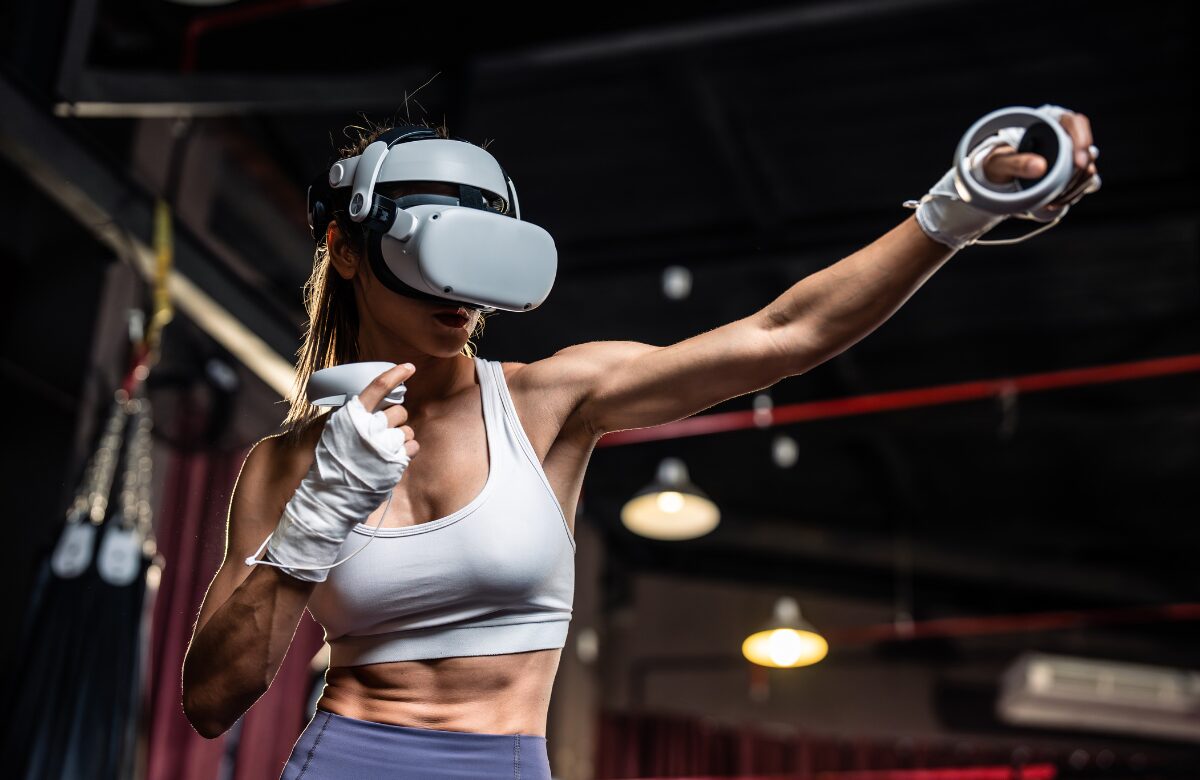

Improve Athletic Performance: Virtual Reality in Sports Training
In the realm of sports, excellence is often achieved through relentless training, honing skills, and enhancing performance. Over the years, technological advancements have continually reshaped training methodologies.
One of the most revolutionary innovations in this domain is the integration of Virtual Reality (VR) into sports training programs.
VR technology has opened up new dimensions for athletes, coaches, and teams to enhance training, improve decision-making, and optimize performance across various sports disciplines.
Understanding VR in Sports Training
Virtual Reality in sports training involves the use of immersive simulations to replicate real-game scenarios, enabling athletes to practice and refine their skills in a controlled environment.
Whether it’s basketball, soccer, football, or tennis, VR simulations offer athletes the opportunity to train in scenarios that closely resemble actual game situations.
Pioneering Companies in VR Sports Training
1. STRIVR
Known for its versatility in VR applications, STRIVR has made significant strides in sports training. Their VR solutions cater to various sports, providing athletes with realistic simulations to improve decision-making, reaction time, and situational awareness.
2. EON Sports VR
EON Sports VR specializes in creating VR platforms specifically designed for sports training. Their focus lies in developing immersive environments that replicate game scenarios, offering athletes opportunities for repetitive practice and skill enhancement.
3. Sense Arena
Sense Arena focuses on hockey and has created a VR training platform tailored for hockey players. Their simulations replicate on-ice scenarios, allowing players to practice various skills, including shooting, passing, and decision-making, in a virtual environment.
4. STRIVR Labs
While primarily known for corporate and safety training, STRIVR Labs also applies its expertise to sports. They develop VR solutions that provide athletes with data-driven insights and analytics, aiding in performance assessment and improvement.
A Comprehensive Look at VR Safety Training Companies
Benefits of VR in Sports Training
- Enhanced Decision-Making: VR simulations enable athletes to experience real-game situations repeatedly, leading to improved decision-making abilities under pressure.
- Skill Development: Athletes can practice specific skills repeatedly in a realistic environment, refining techniques and muscle memory.
- Injury Prevention: VR training allows athletes to train without physical strain or risk of injury, aiding in rehabilitation and reducing the likelihood of overexertion.
- Adaptability: VR training can be customized to cater to individual athlete needs, focusing on areas that require improvement.
Challenges and Future Prospects
While VR in sports training has showcased immense potential, challenges persist. Cost implications, technological limitations, and the need for continual advancements in hardware and software remain areas of concern.
Moreover, ensuring that VR simulations accurately replicate real-world game scenarios is an ongoing challenge.
However, the future of VR in sports training looks promising. As technology evolves, VR solutions will become more refined, accessible, and seamlessly integrated into athletes’ training regimens.
Additionally, advancements in AI and data analytics will further enhance the effectiveness of VR training by providing detailed performance metrics and personalized training programs.
Conclusion
The integration of Virtual Reality into sports training is revolutionizing how athletes prepare for competitions. Companies like STRIVR, EON Sports VR, Sense Arena, and STRIVR Labs are at the forefront, providing innovative VR solutions tailored to various sports.
As the technology matures, VR training will continue to be a game-changer, empowering athletes to hone their skills, make better decisions, and ultimately elevate their performance on the field or court.


